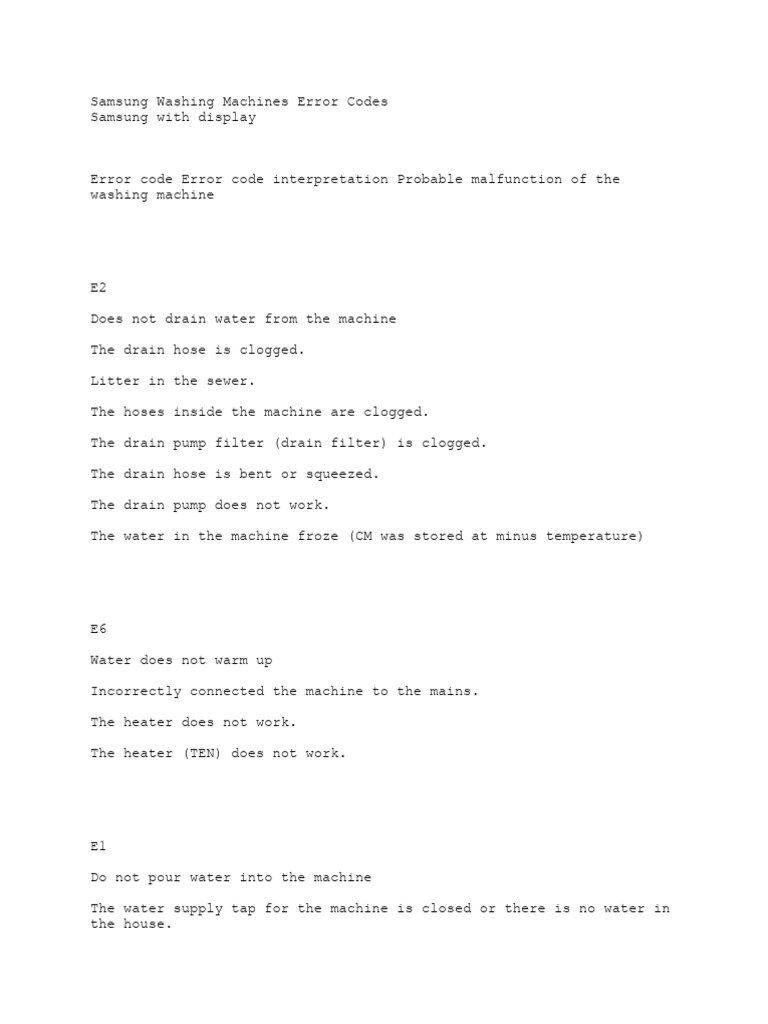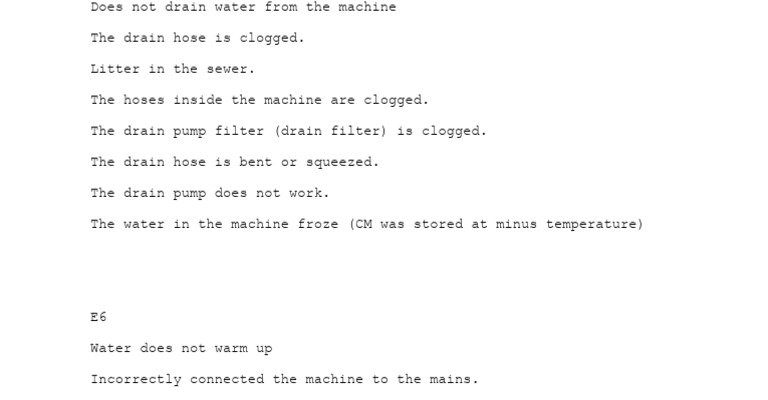
So, what does this “HE” error code signify? In the simplest terms, “HE” refers to a heating problem within your washing machine. It’s like your washing machine is trying to tell you, “Hey, I’ve got a problem with getting warm!” Just like how you might struggle to do your job on a cold day without a nice warm jacket, your washing machine can’t do its job properly if it can’t heat the water to the right temperature. Let’s dive deeper into what causes this issue and how you can tackle it.
Understanding the “HE” Error Code
When you see the “HE” error code, it’s typically indicating a problem with the heater in your washing machine. Just think of it like when a car’s engine light comes on — it’s prompting you to check under the hood. Specifically, the “HE” error relates to the heating element, which is responsible for warming the water. If the machine can’t heat up, it can’t clean clothes as effectively.
Imagine you’re trying to wash dishes in cold water; it just doesn’t have the same effect as a nice warm soak. Similarly, your washing machine’s efficiency drops if it can’t heat the water. This issue can be caused by a faulty heating element, a problem with the thermostat, or even a wiring issue. Understanding what “HE” stands for is your first step in diagnosing and fixing the problem.
Once you know what this code means, you can begin to assess the situation. Check to see if the machine’s power source is stable, as fluctuations can affect the machine’s ability to heat water. Sometimes, resetting the machine can clear the error, much like rebooting your computer when it’s acting up. But if the error persists, it might be time to get more technical.
Common Causes of the “HE” Error Code
Now that you know “HE” is about heating issues, let’s explore what might cause this. One common culprit is the heating element itself. This component, much like the filament in a light bulb, can burn out or become damaged over time. If the heating element fails, the water won’t reach the necessary temperature for effective cleaning.
Another potential cause could be the thermostat. Think of it as the machine’s thermometer, regulating water temperature. If it’s reading the temperature incorrectly, the machine may think it’s fine when it’s actually not hot enough. This misreading can trigger the “HE” code, alerting you to a problem.
Lastly, consider the wiring. Yes, it’s as complex as it sounds, but sometimes wires can fray or become disconnected, affecting the ability of the heating components to function. It’s similar to a loose cord on your phone charger; it seems fine until it stops charging your device. If the wiring is indeed the issue, it may require a bit of expert attention.
Steps to Fix the “HE” Error Code
So you’ve figured out what’s going wrong, but how do you fix it? First and foremost, ensure your safety by unplugging the machine before diving into any repairs. Once safe, you can start troubleshooting. If you suspect the heating element, you might need to replace it. This task involves opening up the machine, so if DIY isn’t your thing, consider calling a professional.
If you’re determined to tackle it yourself, locate the heating element, which can often be found behind a panel on the machine’s rear. It’s generally a metal rod; check for any visible damage or breaks. Replacing it might involve a few screws and some patience, but it’s doable with the right tools and a good guide.
For thermostat issues, it might require a multimeter to check if it’s functioning correctly. Again, if this feels out of your depth, a professional’s help can ensure it’s done right. For wiring problems, it’s often best left to someone with electrical expertise, as it can get complex and sometimes hazardous.
Preventing Future “HE” Errors
We’ve all heard the saying, “An ounce of prevention is worth a pound of cure,” and that certainly applies here. Regular maintenance of your washing machine can prevent the “HE” error from recurring. Periodically check the machine’s hoses and connections to ensure they’re secure and free of wear and tear. Simple maintenance might save you from more significant issues down the road.
Consider using washing machine cleaners to prevent buildup inside the drum and on heating elements. It’s like giving your machine a spa day, keeping it in top shape. Additionally, running a regular empty wash cycle with vinegar can help clean out any residues that might affect the heating efficiency.
Lastly, always follow the manufacturer’s user manual for guidelines on loading the machine and choosing the right settings. Overloading can strain components, and improper settings may lead to unnecessary wear and tear. By taking care of your washing machine, you’re not only extending its life but also keeping it running efficiently for those endless laundry loads.
